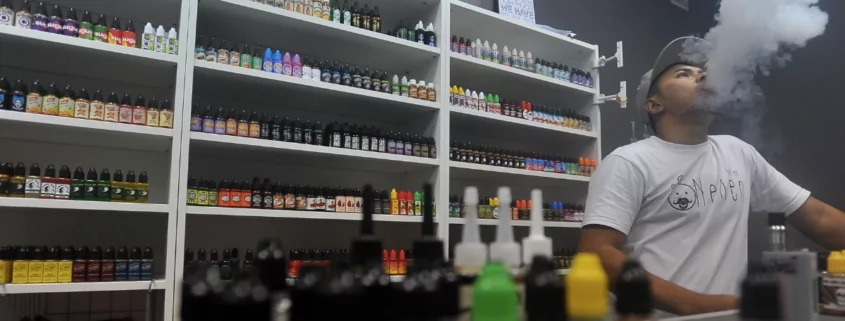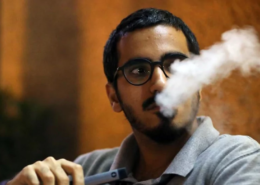The Rapid Growth of Vaping Industry in Malaysia 2023
The use of electronic cigarettes, commonly known as vaping, has exploded in popularity worldwide and in Malaysia over the past decade. Driven by factors like high conventional tobacco cigarette smoking rates, vaping has emerged as an alternative nicotine delivery system for many smokers looking to quit or reduce harm. However, the meteoric rise of vaping has also raised mounting concerns around uptake by youth and adolescents, as well as potential health effects from long-term use.
In Malaysia, vaping has become a major and rapidly expanding industry, with significant economic impacts. The sector employs thousands of workers and generates billions in sales revenue annually. However, policymakers now face the delicate challenge of balancing continued vaping market growth to maximize economic opportunities, while also serving public health interests and preventing unintended consequences such as youth addiction. This article comprehensively analyzes Malaysia’s vaping landscape, examining detailed industry statistics, user demographics, regulatory approaches, public health concerns, and possible policy directions.
Vaping Industry Growth in Malaysia
Recent data underscores the tremendous growth Malaysia’s vaping sector has enjoyed over the past few years. According to the 2023 industry report by the Malaysian Vape Chamber of Commerce (MVCC), the estimated retail value of the vaping market surged an astounding 53% from RM2.27 billion in 2019 to RM3.48 billion in 2023. This indicates vaping’s sales revenue nearly doubled in just a four year period.
The number of dedicated vape specialty stores declined slightly from approximately 3,000 shops in 2019 to 2,500 in 2022. However, overall vaping product availability expanded dramatically, with about 7,500 general retailers such as convenience stores also selling vapes last year.
This massive retail growth aligned with a 27% increase in adult vaping users nationwide, from 1.1 million users in 2019 to 1.4 million in 2022, the MVCC reported. Malaysian vaping industry direct employment correspondingly more than doubled over this period, from 15,000 jobs in 2019 to 31,500 in 2022.
Much of vaping’s surge in popularity can be attributed to the rise of disposable vape devices, which have proven especially popular compared to reusable open and closed vaping systems. The convenience, affordability, accessibility, and discreet nature of disposables accelerated their uptake. Disposables grabbed a 32% share of total vaping product sales as of 2023, indicating nearly one-third of the market.
Overall, comprehensive industry data shows tremendous, even exponential, growth in Malaysia’s vaping sector pre-pandemic between 2019 and 2022. This massive expansion of vape businesses, sales revenue, consumer adoption, and job creation makes the vaping industry a rapidly rising economic force in the country. However, major questions around youth uptake and undetermined long-term public health effects remain.
| Year | Retail Value (RM Billions) | Adult Users (Millions) | Workforce |
|---|---|---|---|
| 2019 | 2.27 | 1.1 | 15,000 |
| 2022 | 3.48 | 1.4 | 31,500 |
Vaping User Demographics and Preferences
Beyond top-line sales and growth statistics, who specifically constitutes Malaysia’s vaping user base and market? According to the MVCC’s 2023 nationwide consumer survey, 70% of vaping product users were ethnically Malay, over 80% were under 40 years old, and nearly 70% were white collar professionals or businessmen. About half held at least a university degree or higher.
The survey also found that most adult vapers were dual users, meaning they maintained conventional tobacco cigarette smoking concurrently while also using vaping products. This aligns with a key driver for e-cigarette adoption – smoking cessation and harm reduction. 45% of survey respondents cited vaping’s perceived lower health risks relative to smoking combustible cigarettes, while another 45% said vaping helps them reduce or quit smoking traditional cigarettes.
On preferred vaping product types and flavors, fruit-flavored nicotine vape liquids dominated consumer preferences at 61% of sales. But a significant minority of vapers opted for mint or menthol flavored products (31%) as well as coffee flavors (19%). This demonstrates the diversity of tastes among vaping consumers in Malaysia, complicating proposals to ban all flavored vape liquids to discourage youth use.
Over a third of surveyed vapers reported using nicotine-containing e-liquids, while 28% used non-nicotine vaping products. The remainder used both nicotine and non-nicotine vapes. This indicates Malaysian vapers do not universally favor high-nicotine products, contrary to some perceptions.
Malaysia Vaping User Survey Results
| Characteristic | Percentage |
|---|---|
| Malay Ethnicity | 70% |
| Under 40 Years Old | 80% |
| White Collar | Nearly 70% |
| University Educated | Nearly 50% |
| Also Smoke Cigarettes | 69% |
Rising Health Concerns Around Youth Vaping
While most current vaping consumers in Malaysia remain adults, vaping rates among youth and adolescents have also climbed dramatically in recent years. The National Health and Morbidity Survey: Adolescent Health found 14.9% of teenagers aged 13-17 nationwide were current vape users in 2022, up substantially from 9.8% in 2017.
Public health experts worry these high and rising youth vaping levels could lead to nicotine addiction among adolescents still undergoing brain development. Some emerging research also tentatively links teen vaping with increased likelihood of transitioning to smoking traditional cigarettes in adulthood relative to non-vaping youth.
Critics argue the variety of sweet, dessert-like flavors available for vaping products increases their appeal to curious youth compared to adult smokers. However, vaping industry advocates dispute marketing intentionally targets minors, claiming adult smokers remain the target market for vaping as a safer nicotine alternative to cigarettes.
Nonetheless, preventing increased uptake of vaping among non-smoking adolescents is a major regulatory challenge facing Malaysian officials in view of public health considerations. This must be balanced with ensuring adult smokers retain access to demonstrably less harmful alternatives.
Economic Impacts and Considerations
As the detailed data shows, vaping has become major economic contributor providing thousands of well-paying jobs, generating billions in sales, and supporting numerous entrepreneurial opportunities in Malaysia. One industry estimate projects the vaping market valuation could potentially reach RM10 billion or more with smart supportive policies and regulations. Taxes on vaping products also raise substantial government revenue.
Vaping advocates frequently caution against overregulation with a broad brush that could severely hamper continued organic industry growth. Bumiputera entrepreneurs, in particular, could face markedly reduced business opportunities if highly stringent vaping laws or blanket bans are passed without nuance.
But on the other side, public health groups argue preventing youth addiction and maintaining population health should take priority over unfettered industry profits. They propose higher taxes specifically on vaping products popular with youth, stricter marketing restrictions, usage bans, and similar measures – even at the cost of slowing overall vaping market expansion to some degree.
Malaysian policymakers must carefully weigh these economic trade-offs and incentives. Smart vaping regulation could potentially allow responsible market growth benefiting Malaysian businesses while also funding preventive education programs and youth smoking cessation efforts through leveled taxation on the vaping sector.
Policy Options and Recommendations
Given the complex considerations around benefits and risks, how should Malaysia strategically approach effective vaping regulation? There are several broad policy options on the table, each with varying pros and cons.
One approach is relatively permissive vaping access paired with high taxation rates. This combination stimulates continued industry growth and entrepreneurship while using progressive tax revenue to help curb youth uptake through school programs and smoking cessation support. However, many health groups argue high taxes alone fail to restrict youth-oriented vaping marketing and flavors.
Conversely, banning all vape flavors and imposing strict marketing restrictions could help prevent youth vaping initiation and reduce adolescent addiction risk. But this blanket approach risks shifting adult vapers partly to the black market for flavored products while severely angering the industry.
A balanced regulatory framework could potentially include moderate restrictions on certain youth-friendly flavors, some reasonable marketing rules, high taxation funding youth prevention and cessation programs, establishing vape-specific smoking spaces, and limiting sales only to specialty shops. This comprehensive strategy aims to account for various concerns and constituencies.
The Future of Vaping in Malaysia
Vaping’s future growth direction and impacts depend heavily on coming policy choices made by Malaysian regulators and lawmakers. With optimally balanced oversight, Malaysia could become a responsible global vaping leader. The MVCC estimates the country’s vaping market valuation could reach RM10 billion or more under smart regulations supporting the sector’s continued expansion.
However, without proper control and checks against unchecked industry profiteering, public health experts warn Malaysia risks fueling a youth vaping addiction crisis on the scale already seen in Western markets. Other regional examples like Thailand entirely banning vaping demonstrate this stern regulatory possibility if youth uptake rises unfettered.
Ultimately, Malaysia must craft evidence-based vaping policies that aim to maximize benefits for adults while minimizing harm risks for youth. This entails nuanced regulations that strike a wise public health balance. If policymakers account for perspectives from all stakeholders in the vaping debate, Malaysia could build a thriving, socially-responsible vaping sector that sustains jobs while preventing adolescent addiction.
But achieving this optimal balance through fair compromises on all sides will remain challenging. Malaysia has the opportunity to get ahead of the issue and develop vaping regulations that set an example for the Southeast Asian region. But thoughtful, cooperative policymaking will be essential.
- UK Wolverhampton Extends “Swap to Stop” Vape Program - July 4, 2025
- Pakistan Halts Vape Crackdown Pending Legislation - July 4, 2025
- Wisconsin New Law Banning Sale of Most Vape Products - July 4, 2025









